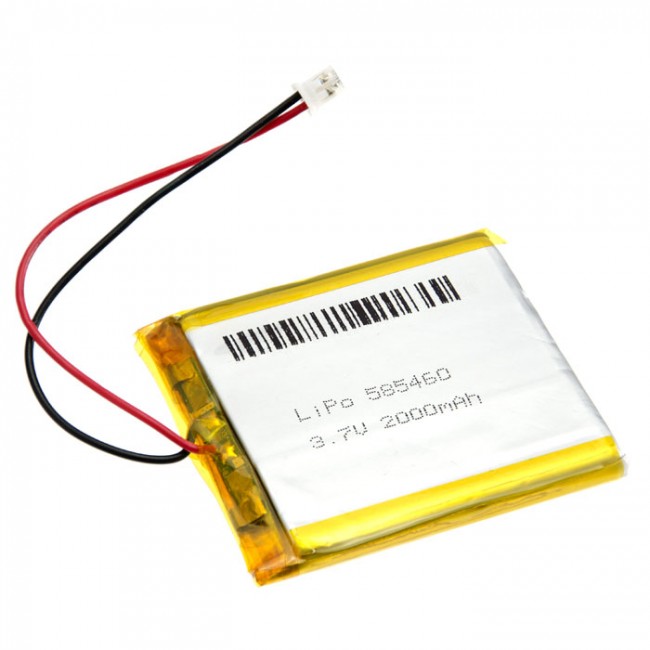
The common LiPos we deal with are the single cell 3.7V batteries. One cell LiPos have a nominal 3.7V rating; labeled as 1S 3.7V (1 cell) on the datasheet. The discharge rate of a battery is another specification to be aware of; we call it C. The C of the battery is the Ah (capacity) of the battery, divided by 1 hour; it relates to how much current the battery likes to have drawn from it at any time. We typically see the maximum discharge rate of a battery measured as a number of C (i.e. 1C, 2C) and the same goes for its charging rate. For example, take this 1000mAh LiPo we stock, it has a C value of 1000mAh/1 Hour = 1000mA. It has a continuous discharge rating of 2C (which is 2 x 1000mA = 2000mA!). Typically, we don't want to be charging our LiPo batteries at anything other than .5C unless stated on the datasheet for the battery.
Moving forward, we looked at series and parallel connections for batteries in a previous article, and while the rules hold true for the LiPo technology, it's strongly recommended you don't connect LiPos together. The story behind this is that LiPos can discharge into each other, deplete unevenly; the resulting drop to dangerously low voltages can lead to your batteries becoming physically unstable. Ever seen what happens to Lithium when you expose it to air? I remember seeing it in high-school science, it ignites and burns pretty vigorously. If a LiPo package ruptures and the Lithium Ions inside become reactive with the atmosphere, you will see a recreation of that same experiment but in your pocket/project. I don't mean to scare you off the LiPo technology, more to enforce these rules as paramount!

- Stay at a charge rating of 0.5C to 1C
- Be aware that LiPos tend to have life cycles of around 200-300 charges before becoming unstable.
- Ensure the battery you use has protection circuitry to protect from short-circuiting discharges, over-charging, etc.
- Ensure you are using a LiPo specific charger
- Don't ever leave your LiPo in the Sun for too long; the extreme heat change can make your battery swell up and disfigure.
- Never charge your batteries at a voltage higher than their maximum rating (4.2V for a nominal 3.7V Battery).
- Never use a LiPo once it starts to swell, you want to remove it from your project as soon as possible.
If you are purchasing a LiPo from us, or even if you have got one elsewhere, take a look at our favorite LiPo chargers, the PowerBoost Modules from Adafruit! These modules are our go to for reliable and safe LiPo charging! Not only will they use USB power to charge your LiPo, but they can also power your project while you charge your battery and have a built in DC-DC booster; making your 3.7V battery a 5.2V battery for your microcontroller projects. These fantastic little modules are the size of your fingertip and come in 500mA and 1000mA models. They will provide all this functionality to a project, and are well worth considering for your LiPo circuit!
We hope this tutorial gleaned into the safe operation of LiPo batteries and has given you some safety guidelines to abide by in your designs!


